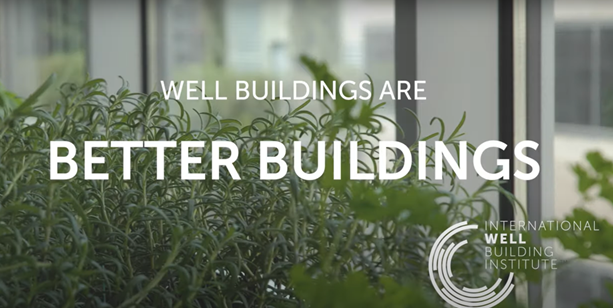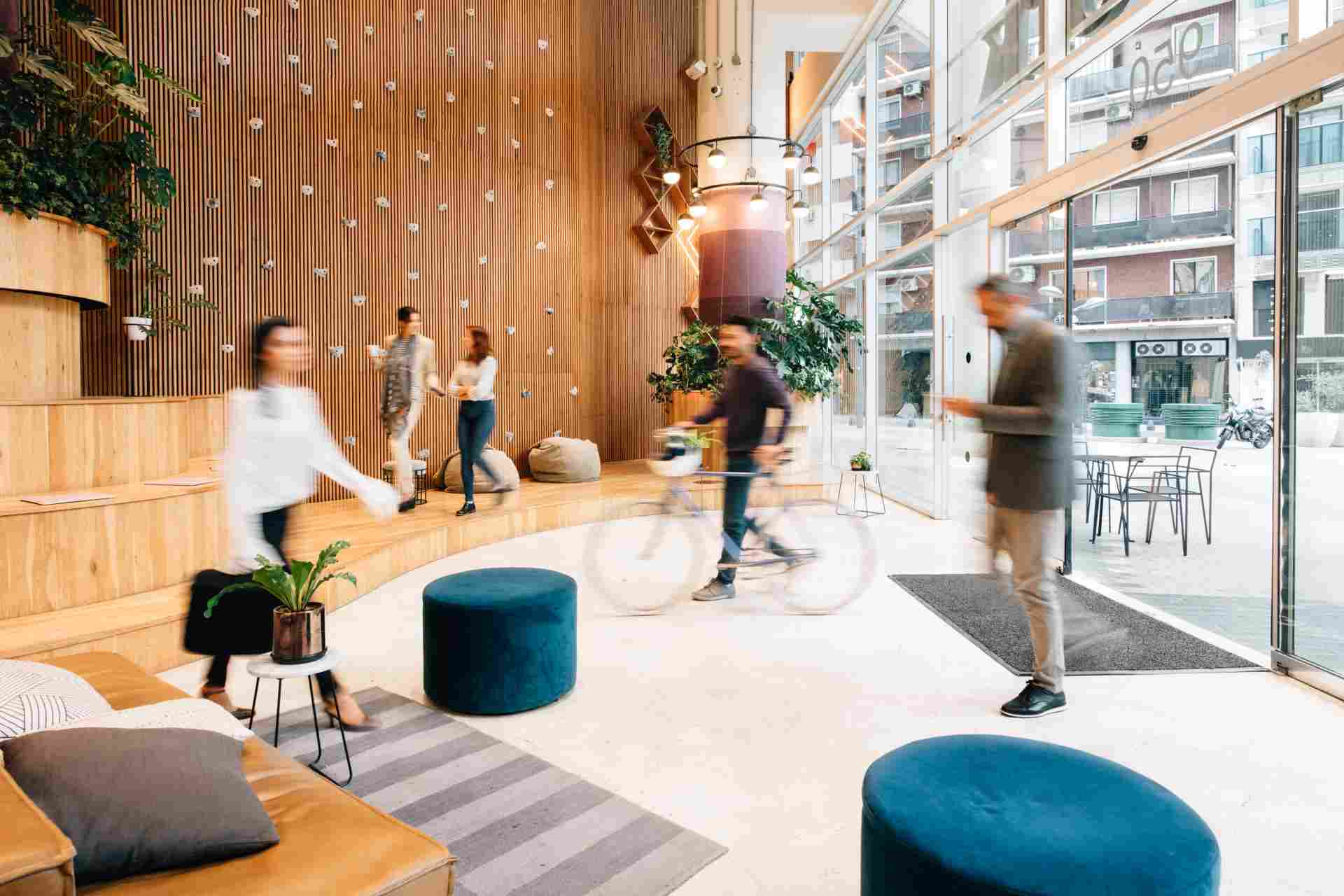Urban development has progressively alienated humans from the natural environment. And it’s getting worse all the time. It is estimated that we spend 90% of our time indoors. Yet we are dependent on nature in every way. Without water, sunlight, plants or fresh air, how could we survive?
In this context, it’s equally true that we’re witnessing a profound cultural transformation that is also affecting the way we work. The pandemic, but above all the growing social and environmental commitment of the business world, especially of the younger generations entering management positions, has ushered in a new trend. Its goal is to reverse this state of disconnection with the environment, with nature or even with our own well-being, and to construct buildings in harmony with the environment and with the people who live in them.
That’s the essence of WELL certification, the world’s first building accreditation that focuses exclusively on human health and well-being in order to sanction the spaces that take the best care of these aspects. Here’s what it’s all about.
What will I read about in this article?
Designing buildings with people in mind
The construction of sustainable buildings is an increasingly widespread trend as an exercise in responsibility on the part of construction companies and clients, but also as a way of complying with increasingly demanding legislation in this regard. Therefore, working in a sustainable building will be a plus for the employees of a corporation, but in this article we’re talking about something else. We’re talking about regenerative spaces that go beyond energy efficiency and respect for the environment, designed to generate a positive impact on the people who live in them.

It is precisely such type of constructions that the WELL Building Standard —the first building quality certification that focuses exclusively on how buildings affect the health and well-being of those who will live in them— seeks to achieve.
“The WELL Building Standard is the world’s first building certification that focuses exclusively on human health and well-being and accredits the spaces that take the best care of these aspects.”
But what exactly is the WELL rating? It’s a rating system for acknowledging buildings and spaces that help people thrive, i.e., it assesses all its criteria through the prism of how the elements or services of a building influence human health and well-being. One of the key features of this certification is that, every 3 years, the qualities for which a space has been awarded the WELL certification are re-audited and re-qualified by the institution.
Therefore, WELL is not just a seal, it is more a roadmap for the buildings that bear it, a living and dynamic distinction that becomes the commitment and responsibility for the companies or buildings which receive it to maintain and upgrade elements and services in compliance with the certification requirements.
“The idea is to celebrate and distinguish those spaces that generate a positive impact on the people who inhabit them”
At a time when we’ve been forced to distance ourselves, there are companies that are making a huge effort to ensure that the life of their employees in their offices and the way they work inside them offers a radically differentiating plus. They are betting on new workspaces that promote socialisation, innovation and conciliation. And all these aspects have a lot to do with this certification.

The 10 categories assessed by the WELL Building Standard Certification
* Air: Buildings with this label seek to implement holistic design strategies to promote clean air and minimise human exposure to harmful pollutants in order to maximise the benefits for productivity, well-being and health.
* Water: Quality water and sanitation should be available to building users. In addition, this criterion also includes the reduction of health risks due to contaminated water and excessive humidity inside buildings.
* Nutrition: Building management and services are also a key issue. In this regard, it is a requirement to support healthy and sustainable eating patterns by increasing access to fruit and vegetables, limiting the availability of highly processed foods and designing environments that encourage people to make healthier choices.
* Light: aims to provide a lighting environment that reduces circadian phase disruption, improves sleep quality and positively impacts mood and productivity.
* Movement: it is essential that design promotes physical activity and active living and discourages sedentary lifestyles, creating and enhancing opportunities through the spaces where we spend much of our lives.
* Thermal comfort: should take a holistic approach to thermal comfort and provide an environment that supports people’s health, well-being and productivity while promoting energy efficiency.
* Acoustics: aims to provide a comprehensive and holistic approach to address acoustic comfort concerns through research-based design considerations that buildings can accommodate in order to improve the health and well-being of occupants.
* Materials: It’s essential to reduce human exposure, either directly or through environmental contamination, to chemicals that can affect health during the construction, renovation or cleaning of buildings.
* Mind: Building management should promote design strategies, policies and programmes that support mental and emotional health through a variety of prevention and treatment efforts.
* Community: finally, diversity and social inclusion need to be addressed and design must be considered to allow all people to access, participate and thrive within the building. A single space can lay the foundation for truly equitable, diverse and healthy communities.
To achieve WELL certification, the project must meet a number of preconditions. Points are accumulated according to the optimised design, construction and operation of the buildings. Based on the results of the assessment, three levels are considered:
Benefits of designing buildings by and for people
The WELL Building Standard certification is promoting health and well-being in workplaces around the world. We spend most of our time indoors and the quality of our buildings can affect our productivity and the way we feel.
Buildings that meet this label ensure that the people who work in them enjoy quality water, sanitation and air, as well as spaces that promote healthy habits for both mind and body.

“The quality of our buildings can affect our productivity and the way we feel”.
It is a standard that also brings benefits for the company that opts for its design:
- It helps to attract talent.
- Increases employee engagement and satisfaction.
- It reduces staff turnover.
- It adds value to the brand through sustainability and innovation.
- Maximises performance and results.
- Promotes health and well-being for 100% of employees.
- Encourages higher productivity.
- It reduces absenteeism.
Workspaces have changed. We’re faced with a new reality in which the static, face-to-face environment and static places are taking a back seat. The new corporate offices are committed to putting their workers at the centre and creating open spaces where they can work, interact and create community.


